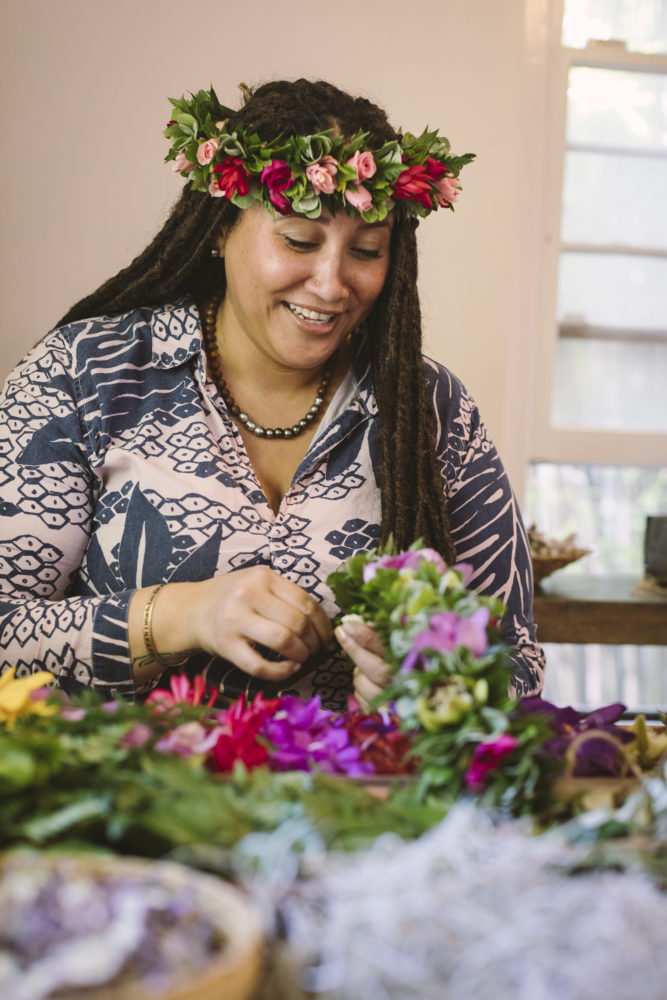Maui artisans and flower growers are reaffirming lei’s origins to the land and revitalizing the craft in fresh and sustainable ways.
A mark of authenticity in contemporary Hawaiʻi, lei conveys importance. There are an array of occasions that call for such exalted adornments, from birthday parties to peace agreements. But there are two stories of lei today: one of commodification, another of regeneration.
For centuries, lei was made with foliage, seeds, feathers, and shells found around the islands. Today, lei flowers are encased in plastic containers and flown in from Thailand, often stopping in Los Angeles on the way. Garlands of purple and white orchids that are predominately sourced from Southeast Asia are given out by the thousands to tourists each day on Maui when they attend a wedding or lū‘au on manicured hotel grounds. And, while imports have increased, Hawaiʻi-grown lei flower sales are less than half of what they were in the late ’90s. Even regal maile is often shipped in from Tonga and the Cook Islands to be worn at wedding ceremonies by unwitting grooms.
However, there is a localized undercurrent in Hawaiʻi’s lei industry powered by emerging lei makers who are eager to reconnect with both the land and culture that has nurtured them. On Maui, a growing group of farmers and artisans are rejecting the prioritization of convenience and unchecked supply for a sustainably foraged, locally grown genre of lei making — the way it used to be.
Haku Maui


During her lei and lei po‘o workshops, Britney Texeira tells her guests that when you wear lei around your neck, it resembles the way a child would embrace their mother. “That’s how much love goes into this,” Texeira tells them. Because, for locals, lei can be interpreted as “a sign of life, almost like an umbilical cord,” she continues. “It’s an extension from oneself or one’s place to another. The next time you see a lei or receive a lei, just take that in for a moment.”
Growing up, Texeira’s family taught her to string lei, but it wasn’t until 2016 when she left the hotel industry to look for a more fulfilling professional path, that she started to make lei in earnest. “I just started gathering,” she says. Texeira wandered the property at her grandmother’s home, picking plumeria, tī leaves, pakalana, and other alluring plants, and made lei while she contemplated her next move, which it turned out, was right in front of her.
Texeira says that through her customers she has developed a more nuanced view of people’s interest in lei. Locals often come to her workshops to acquire the elementary lei making skills they’ve longed for. “There was a time when Hawaiian culture skipped a generation, where the goal was to Americanize,” Texeira explains. “But now that generation, they are parents, and they have keiki or grandparents who they want to be able to give lei to by making it themselves.”
Tourists, meanwhile, who either seek out her workshops or wander into Haku Maui, are often eager to understand lei’s significance beyond its functions in five-star hotels. “There’s this new wave of educated tourists who do their homework before they get here and they want to be respectful and correct,” she says.
Texeira runs her business with her mother, Sheryl Fishell, and best friend, Celina Bailey, from a charming shop and workspace in Makawao, the paniolo town where she grew up picking her tūtū’s flowers. As her business expanded, Texeira started sourcing beyond the family’s yards, but she only buys from Hawaiʻi growers: orchids and anthuriums from Greenpoint Nurseries in Hilo, ginger from Kaeleku Tropicals in Hāna, and protea and other flora from Malolo Farm in Kula and Anuhea Flowers in Olinda.
She also grows palapalai, pōhinahina, maile, and ‘a‘ali‘i at her home in Pukalani and still picks ferns, tī leaves, and pakalana from her grandmother’s yard. Acquaintances with desirable foliage in their yards occasionally drop by unannounced when they have an abundance of a particular plant; during jade season, Texeira sometimes finds a vine of the opulent blue plant left hanging on her shop gate.
Hawaiʻi Flora & Fauna
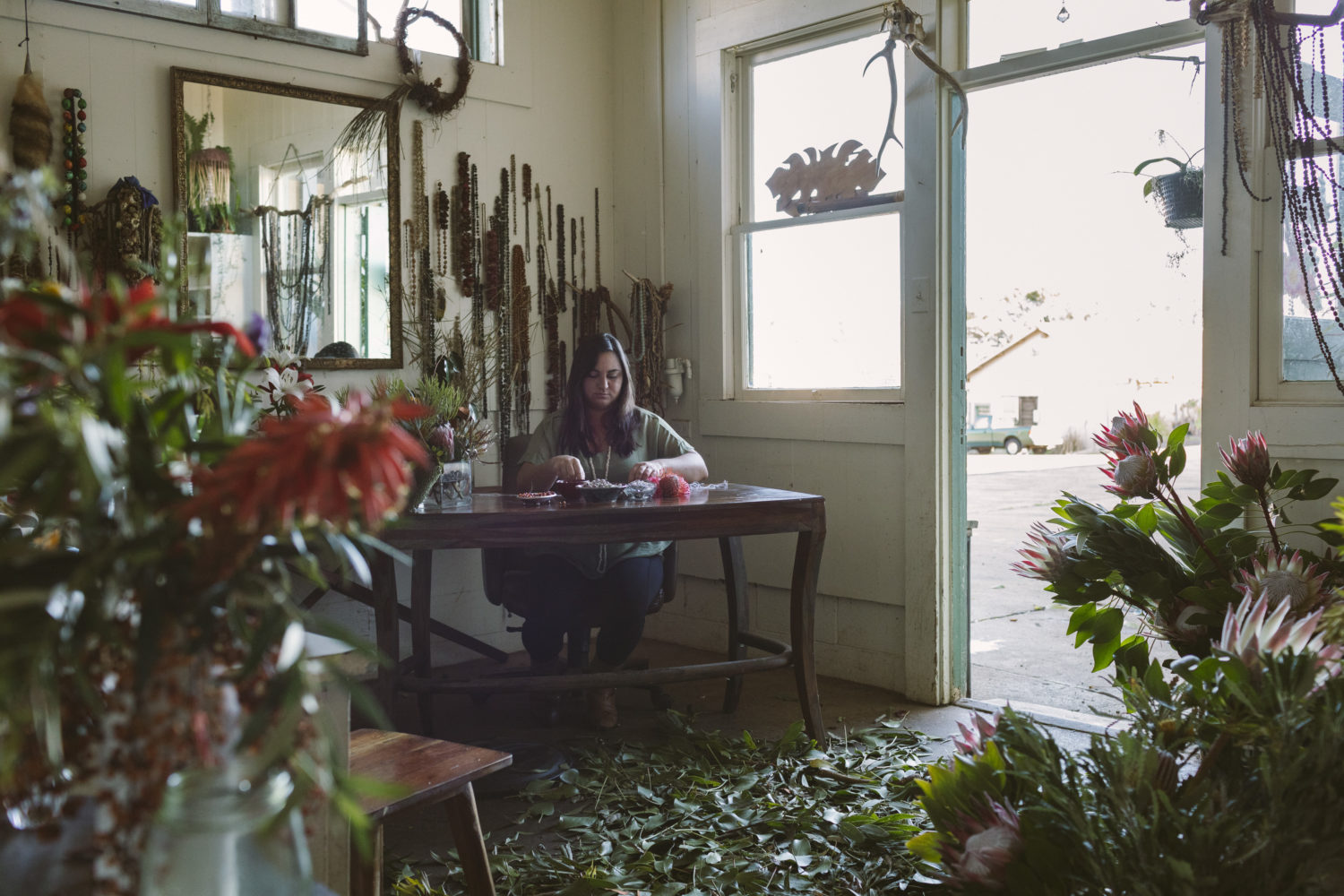

Lauren Shearer sees landscapes differently than most. What appears to be a suburban Wailuku roadside is a row of palm bracts waiting to be harvested. An invasive octopus tree, for example, produces a bounty of he‘e berries ripe for lei making. Shearer, who is not Hawaiian but grew up on Maui, is diligent about asking permission and has learned gathering chants to show respect to the ‘āina and the plants she harvests from.
From sunup to sundown, Shearer is immersed in flora and fauna. At Hawai‘i Flora & Fauna, her protea petal-strewn studio and lei shop in Hāli‘imaile, she takes apart the otherworldly flowers and strings their parts alongside bisected palm seeds and wild roses to make a lei. She forages the lion’s share of her materials and purchases what she needs from Maui growers and local shops like the Morihara Store, a 90-year-old general store in Kula that carries a coveted local tuberose supplier. Shearer also sources ʻilima and crown flower from the Fukushimas, an elderly couple who grow lei flowers and persimmons on their second-generation Kula farm.
There is a localized undercurrent in Hawaiʻi’s lei industry powered by emerging lei makers who are eager to reconnect with both the land and culture that has nurtured them.
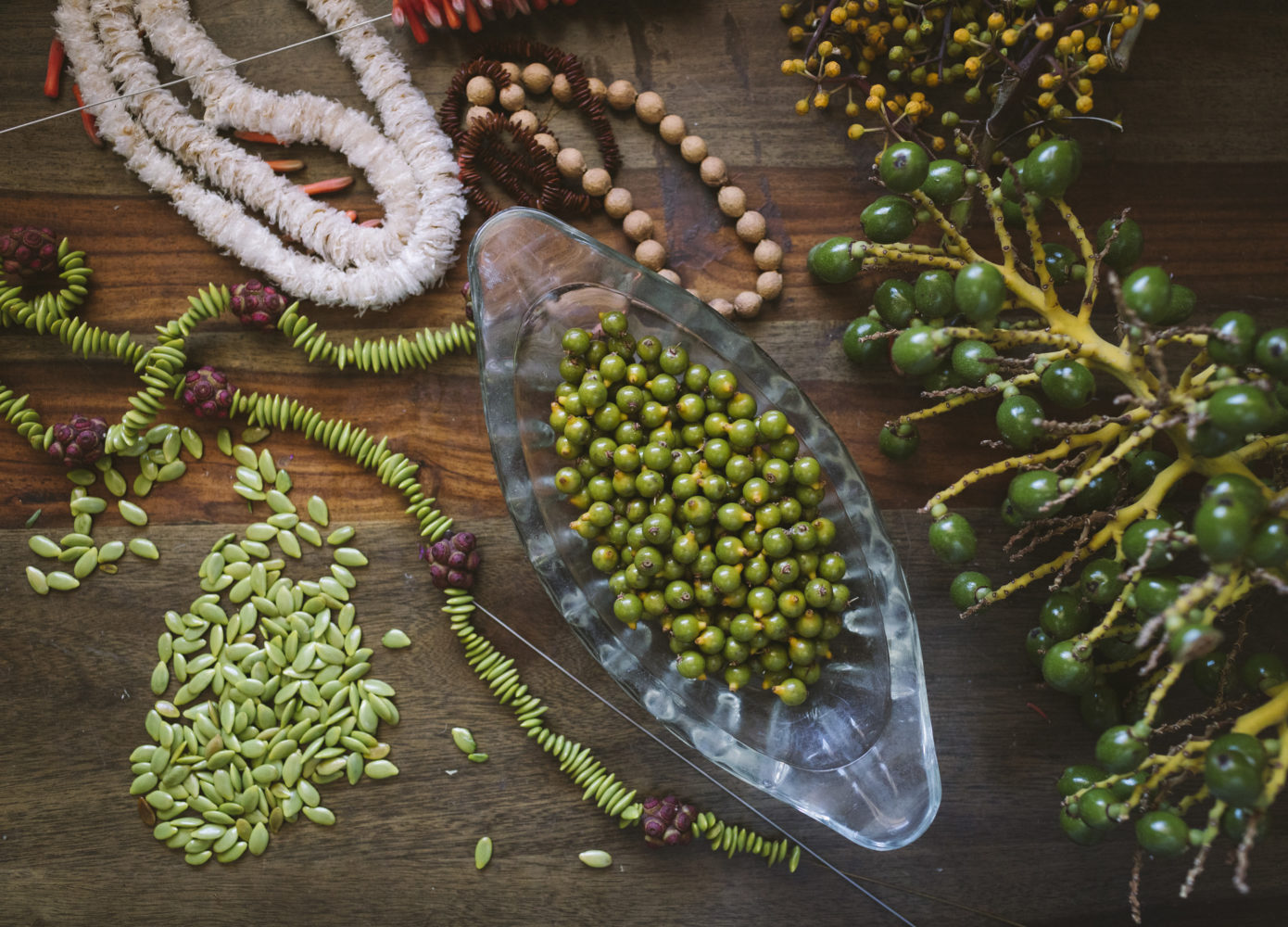

Shearer, who started making lei commercially in 2014, has been stringing her floral creations to adorn friends and family all her life, and still does. But now that she has become something of a floral phenomenon with her inventive, wabi-sabi-esque lei, her creations are given to VIPs at some of Maui’s most illustrious resorts, where she also teaches lei making workshops. In January, she taught a 50-person workshop at the Ritz-Carlton in Kapalua using all foraged flora.
Though Maui residents are still her main clientele, demand from tourists and the hotel industry has been rising year by year. But for now, the order she is most concerned with is a lei haku for a fellow plant evangelist who is about to undergo brain surgery. “I’ll be foraging all of the most medicinal plants I know for this one,” she says, “and putting a lot of mana into it.”
Waiakoa Wildflowers
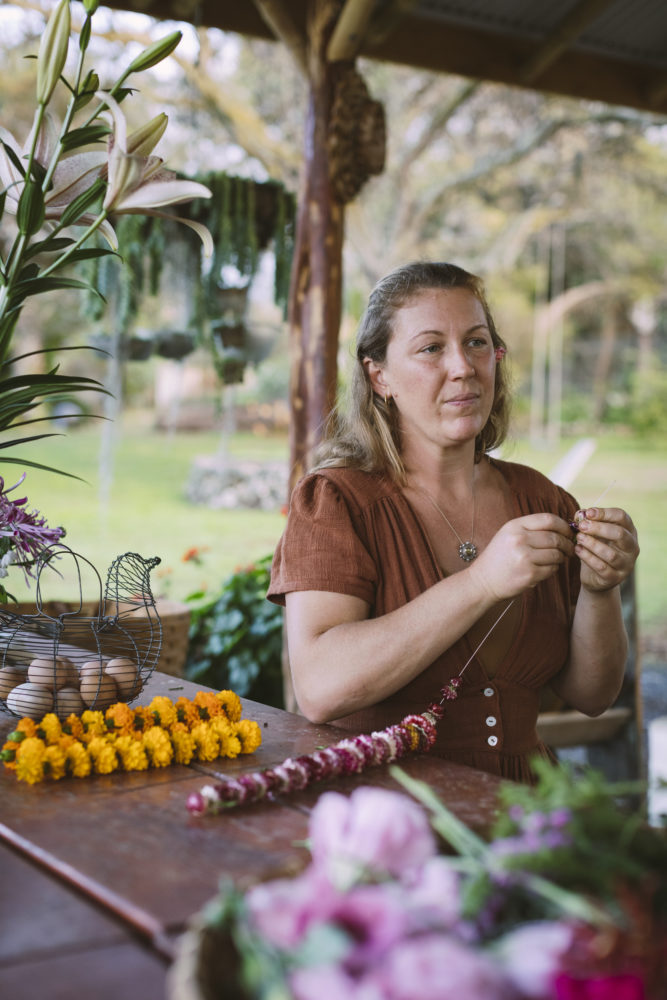
Tessa and Zena Kreider, the sisters of Waiakoa Wildflowers. Kula, Maui. 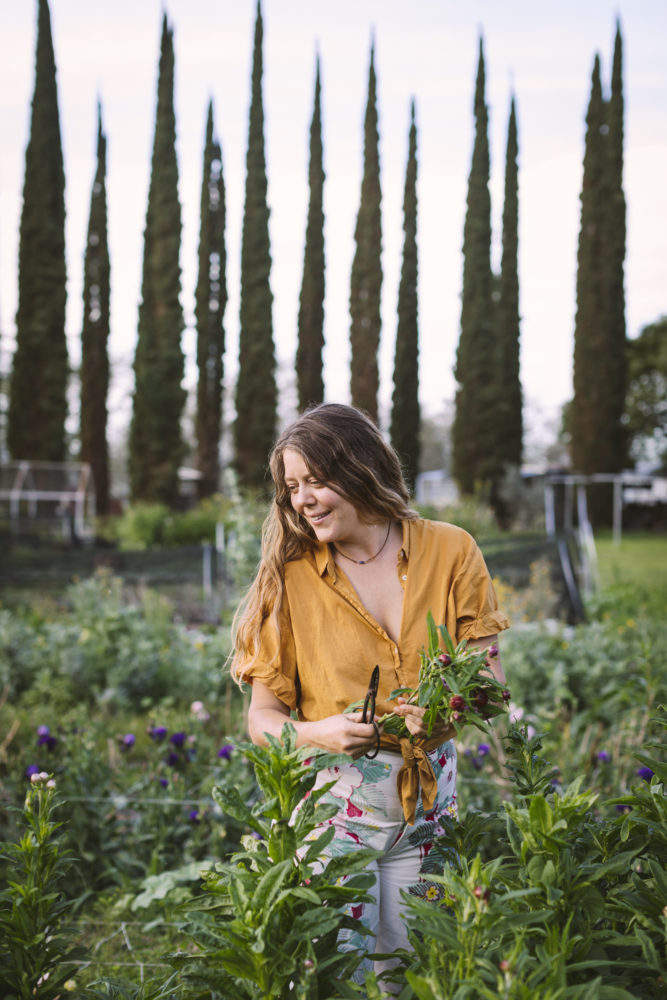
Tessa and Zena Kreider, the sisters behind Waiakoa Wildflowers, appear to be naturals when it comes to bending European cut flowers to their will. Lilies and chrysanthemums grow in the shade of wind-warped kiawe trees on their family property within the Waiakoa ahupua‘a in Kula, a dry, temperate part of Maui situated 2,500 feet up the leeward slope of Haleakalā.
But they will be the first to admit that their flourishing garden came from years of trial and error. “I am married to my garden,” Zena explains. “I have a friend who says, ‘the best fertilizer is the farmer’s shadow,’ and it’s true. Presence is key with growing anything.”
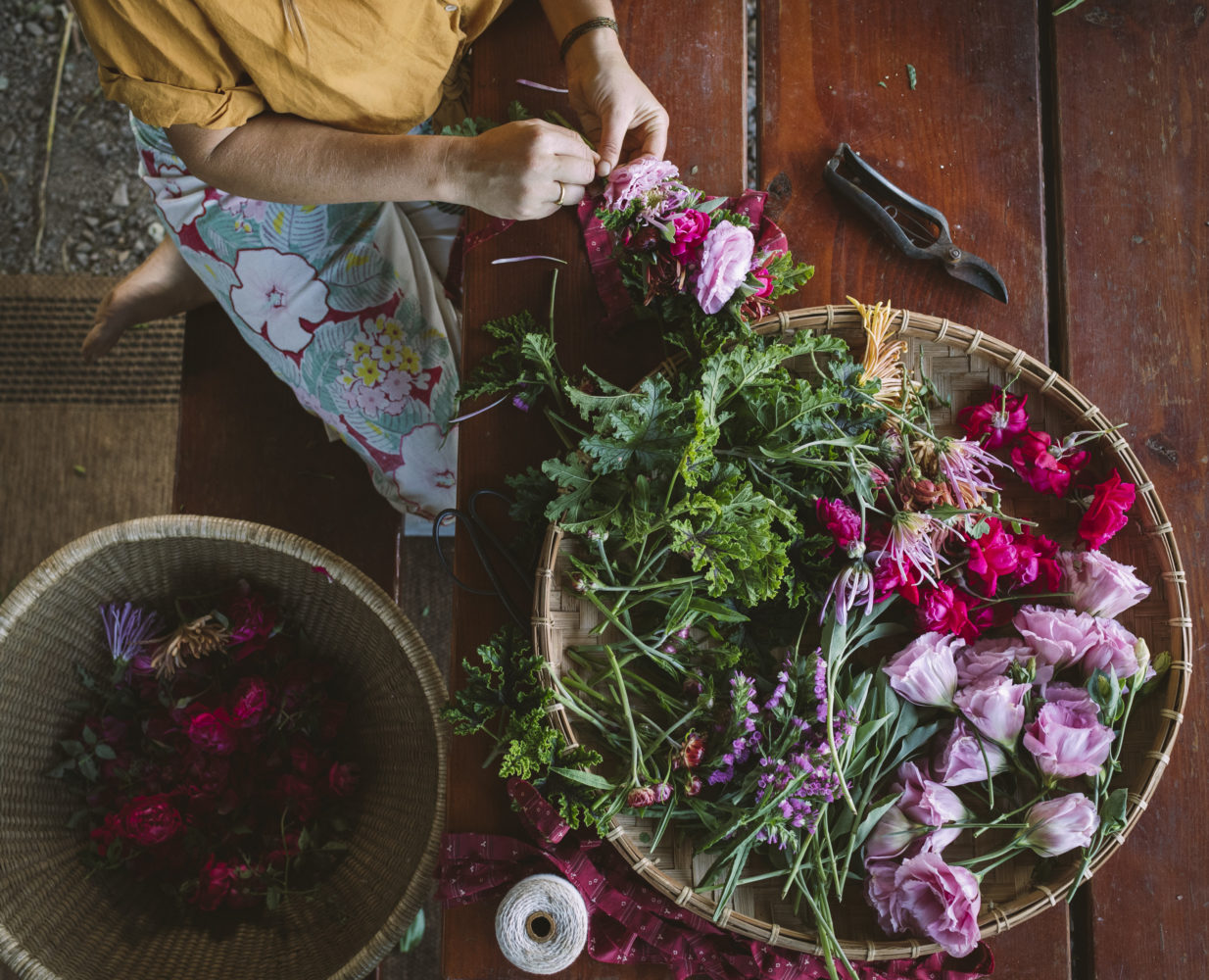

After high school, the two siblings moved to California to study art and leatherwork, but when they returned to Maui in 2012, they ended up using the lei and haku making skills they learned from their hula hālau, right up the road. Their labor of love began with a small memorial garden for their father, sewn with cosmos (his favorite flower and the name of their pet deer). They started sending a handful of bouquets to the farmers market with Zena’s partner, who farmed vegetables. And as the garden grew, their passion matured into a business of made-to-order lei and bouquets, and workshops on the farm.
Disillusioned by the wastefulness that they’ve seen in Maui’s professional floral industry, Tessa and Zena made it their goal to do everything in house. They use upcycled silk ribbon to make their lei poʻo and natural string for their lei. Their “everlasting” lei poʻo, a mixture of strawflowers, statices, and other plants that dry intact, are made to last for years. On their dreamy property, once a dry patch of dirt dotted with thorny brush, silvery hinahina now hangs from kiawe branches amongst thickets of lokelani roses, and ‘āhinahina and ʻaʻaliʻi, sapling natives that the sisters planted to use in their lei.


